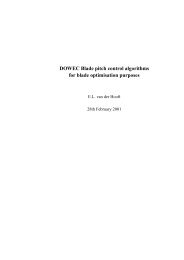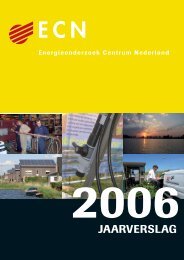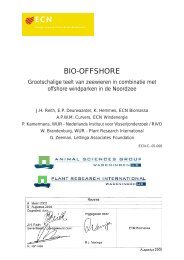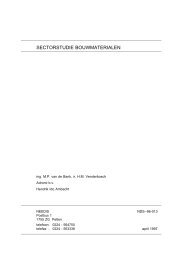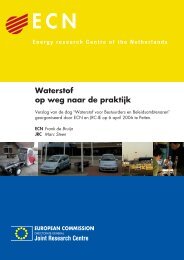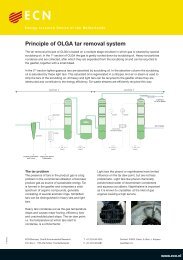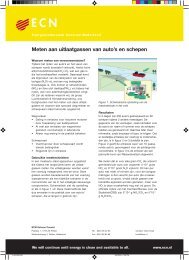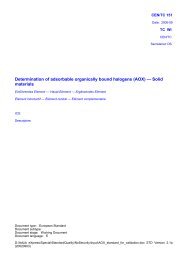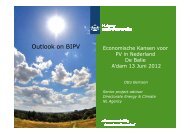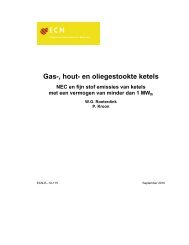PDF format (503 kB) - ECN
PDF format (503 kB) - ECN
PDF format (503 kB) - ECN
You also want an ePaper? Increase the reach of your titles
YUMPU automatically turns print PDFs into web optimized ePapers that Google loves.
This analysis focuses on Western Europe (the 15 countries of the European Union, Iceland, Norway, and Switzerland).<br />
This region has been selected because it poses a relatively closed area from the point of view of material<br />
flows with high related GHG emissions [1] Large transboundary material flows complicate the analysis and<br />
complicate policy making.<br />
Figure 2 shows the contribution of individual categories of greenhouse gases in Western Europe. The areas in<br />
the figure are proportional to the emissions. The total emission is approximately 4259 Mt CO2 equivalents per<br />
year (1990/1995 reference year figures). The emissions that are not covered in this study are also indicated.<br />
This includes the agricultural emissions of CH4 and N2O, SF6 and HFCs. Figure 2 shows that CO2 constitutes<br />
the bulk of the GHG emissions. The CO2 emissions can be split into two sources: emissions that originate from<br />
the combustion of fossil fuels and emissions that originate from the decomposition of limestone. Cement clinker<br />
production and quicklime production are the main sources of the latter type of emission.<br />
The methane emissions can be split into three categories of a similar order of magnitude: deep coal mining,<br />
landfill sites, and agricultural emissions (from manure and from ruminants, not included in the analysis). N2O<br />
emissions can be split into industrial emissions (mainly production of adipic acid and production of nitric acid)<br />
and agricultural emissions (use of nitrogen fertilizers, not included in the analysis). Primary aluminium smelters<br />
are the main source of PFCs.<br />
The figure does not show important net biomass carbon storage in the increasing forest stock, in products, and<br />
in landfill sites. The total storage effect is approximately 300 Mt CO2 per year. This storage is not accounted<br />
for within the framework of the Kyoto agreement.<br />
Figure 2 does not show the relevance of foreign emissions for Western European consumption. For example<br />
methane leakages from Russian gas pipelines, emissions in the production of metals ores and emissions for<br />
tropical timber production are not accounted. The total net GHG emission from these sources for Western<br />
European consumption is approximately 100-150 Mt CO2 equivalents per year. On the other hand, Western<br />
Europe is an important exporter of materials and finished products. For example steel, machinery and scrap is<br />
exported in significant quantities. As a consequence, an emission of 50 Mt CO2 equivalents can be attributed to<br />
foreign consumers.<br />
The following study is based on an “end use” system boundary. All emissions related to the use of products in<br />
Western Europe are included, whether they arise within Western Europe or abroad. All emissions related to the<br />
production of materials in Western Europe that are net exported are excluded from the analysis (net export =<br />
export - import). Net exports of materials within products and net exports of waste materials are not valued in<br />
GHG-emission terms. One one hand, data are scarce, on the other hand the available data suggest that these<br />
flows are less relevant from a GHG emission point of view.



